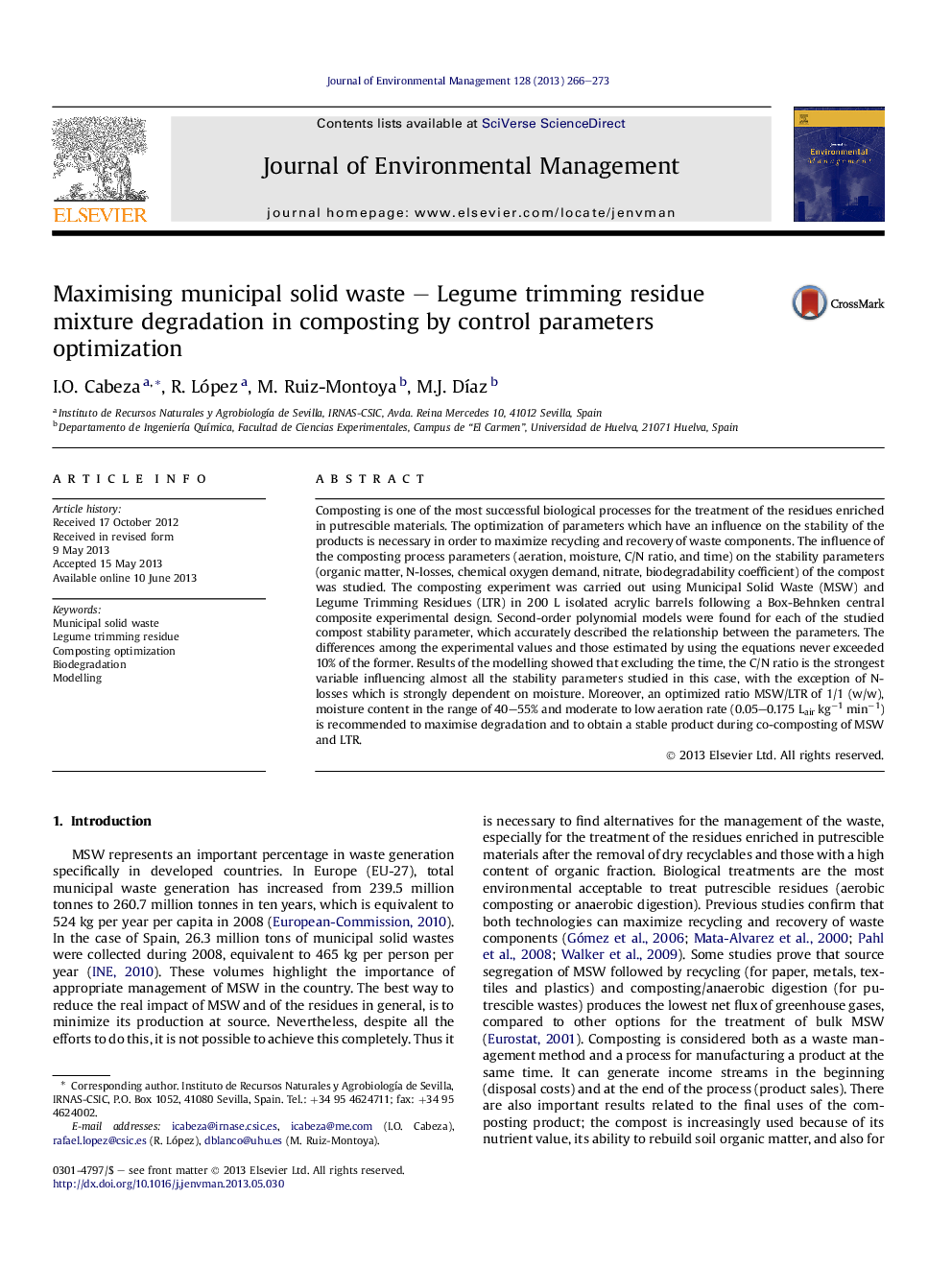| Article ID | Journal | Published Year | Pages | File Type |
|---|---|---|---|---|
| 7484239 | Journal of Environmental Management | 2013 | 8 Pages |
Abstract
Composting is one of the most successful biological processes for the treatment of the residues enriched in putrescible materials. The optimization of parameters which have an influence on the stability of the products is necessary in order to maximize recycling and recovery of waste components. The influence of the composting process parameters (aeration, moisture, C/N ratio, and time) on the stability parameters (organic matter, N-losses, chemical oxygen demand, nitrate, biodegradability coefficient) of the compost was studied. The composting experiment was carried out using Municipal Solid Waste (MSW) and Legume Trimming Residues (LTR) in 200 L isolated acrylic barrels following a Box-Behnken central composite experimental design. Second-order polynomial models were found for each of the studied compost stability parameter, which accurately described the relationship between the parameters. The differences among the experimental values and those estimated by using the equations never exceeded 10% of the former. Results of the modelling showed that excluding the time, the C/N ratio is the strongest variable influencing almost all the stability parameters studied in this case, with the exception of N-losses which is strongly dependent on moisture. Moreover, an optimized ratio MSW/LTR of 1/1 (w/w), moisture content in the range of 40-55% and moderate to low aeration rate (0.05-0.175 Lair kgâ1 minâ1) is recommended to maximise degradation and to obtain a stable product during co-composting of MSW and LTR.
Related Topics
Physical Sciences and Engineering
Energy
Renewable Energy, Sustainability and the Environment
Authors
I.O. Cabeza, R. López, M. Ruiz-Montoya, M.J. DÃaz,
